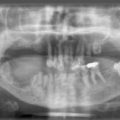12]. The field of radiotherapy computing overlaps traditional work boundaries and there are frequently problems with IT professionals who do not fully understand the requirements of radiotherapy as much as radiotherapy professionals who do not fully understand the technicalities of IT. Out of this situation a new breed is rising, the radiotherapy IT specialist. Such people will be extremely important to ensure that we continue to reap the benefits of computerized radiotherapy.
[1] Moore G. Cramming more components onto integrated circuits. Electronics Magazine. 1965. 19 April
[2] Walter C. Kryder’s law. Sci Am. 2005:07–25.
[3] NHS Finance Manual.
[4] Muller-Runkel R., Watkins S. Introducing a computerized record and verify system: its impact on the reduction of treatment errors. Med Dosim. 1991;16:19–22.
[5] Patton G., et al. Facilitation of radiotherapeutic error by computerized record and verify systems. Int J Radiat Oncol Biol Phys. 2003;56:50–57.
[6] Cerf V., Kahn R. A protocol for packet network intercommunication. IEEE Trans Commun. 1974;COM-22:637–648.
[8] Leveson N. Safeware: system safety and computers. Addison-Wesley; 1995. Available at:
[9]
[10] ISO/IEC 9126. Software product evaluation—Quality characteristics and guidelines for their use. ISO; 2001.
[12] Kirby M., et al. IPEM report 93: Guidance for Commissioning and QA of a Networked Radiotherapy Department. IPEM; 2006.
Stay updated, free articles. Join our Telegram channel

Full access? Get Clinical Tree




